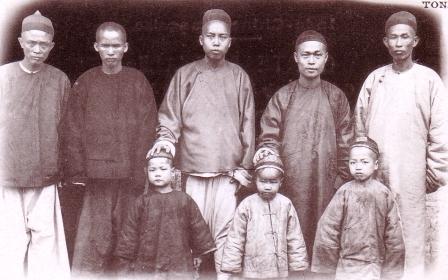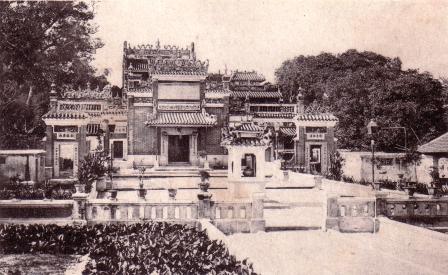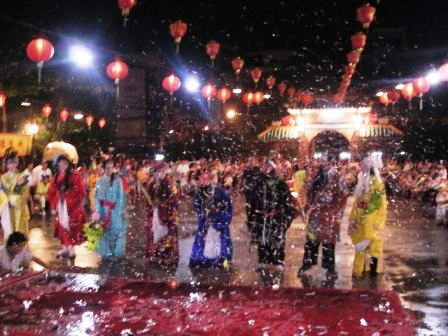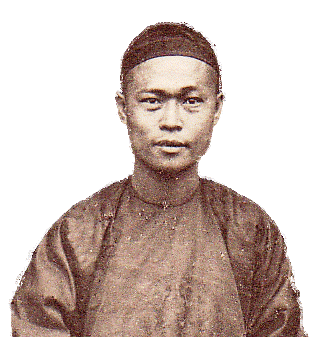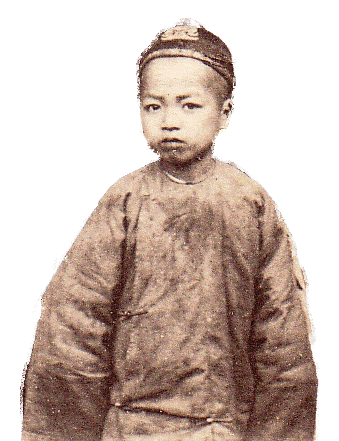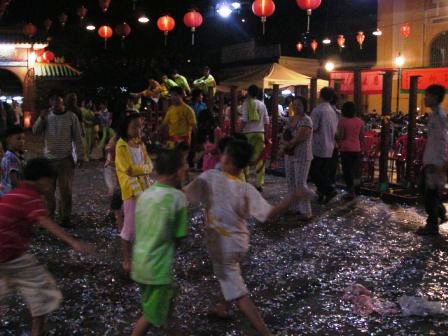 Overseas Chinese in Vietnam Overseas Chinese in Vietnam
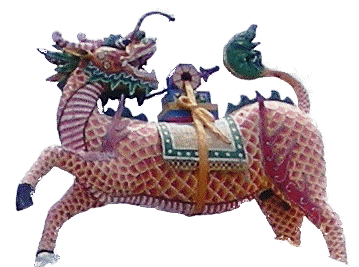 Modern Vietnam shares a physical border with China and has a long and complex history of ethnic Chinese in Vietnam. For about a thousand years from the Qin, 秦朝 to the Five dynasties period, 五代十国, the northern parts of modern Vietnam was incorporated into the Chinese empire. Periods of political disintegration in china and rise of local resistance movement lodged and dislodged Vietnam in and out of the Chinese empire. Modern Vietnam shares a physical border with China and has a long and complex history of ethnic Chinese in Vietnam. For about a thousand years from the Qin, 秦朝 to the Five dynasties period, 五代十国, the northern parts of modern Vietnam was incorporated into the Chinese empire. Periods of political disintegration in china and rise of local resistance movement lodged and dislodged Vietnam in and out of the Chinese empire.
Chinese came as administrators, soldiers, traders and migrants. They brought along their culture and became agents of cultural diffusion to the Vietnamese society. Meanwhile, intermarriage between Chinese and Vietnamese produced a group of Sino-Viet social elites.
Independence
By 940, Vietnam was able to establish herself as a separate political identity for the next 900 years. During this period, the Vietnamese civilization spread southwards and expanded over the Mekong delta.
Vietnamese ruler’s policies towards ethnic Chinese varied from period to period. At times, Chinese were required to dress in Vietnamese style and to live in designated areas. At other times, they were free to trade and to live without many restrictions.
Ming refugees
After the fall of the Ming dynasty,明朝, in 1644, Chinese political refugees fled to Vietnam and settled there. This community was joined by Chinese traders who decided to remind in Vietnam because of the post Ming political chaos. They were loyal to the fallen Ming dynasty and were referred to as Ming-xiang, 明香, Minh Huong in Vietnamese.
Ming-xiang was subsequently reinterpreted by the Vietnamese authorities as Ming-xiang, 明乡, communities loyal to the Ming. Xiang as in “香” refers to joss sticks and ritual instruments that marks a continuity with family or political lineage while xiang as in “乡” refers to a village. Both have very similar pronunciation. In the 19th century, Minh Huong was used as reference to children of Chinese-Vietnamese parentage.
18th century
During the 18 century, the Chinese was caught in between two feuding forces; the Tay Son and the Nguyen Anh. When the Chinese trading centre was plundered by the Tay Son rebels, they establish a new trading base in Cholon, the Chinatown of southern Vietnam. Six years later in 1782, when Tay Son forces captured Cholon, up to 10 000 Chinese were massacred.
The Vietnamese independence ended with the arrival of the French and their establishment of French Indo China in 1887. Central (Annam), northern (Tokin) and southern (Cochin) Vietnam were incorporated into French Indo china.
Under French rule, Chinese migrants arrived by sea and worked as traders, artisans and laborers. These new migrants established Chinese communities in Haiphong, Hanoi, Da Nang, Cholon and Saigon and founded clan associations, temples and school to serve the cultural and social needs of the community. Many existing institutions date to this period.
When the Sino-Japanese War erupted, a delegation of overseas Chinese from Vietnam participated in the Overseas Chinese meeting in Singapore on 10 October 1938. They founded the Nanyang Federation of China Relief Fund, 南洋华侨筹赈祖国难民总会, and set up a local office in Vietnam to raise funds for China.
During World War Two, the Japanese invaded Vietnam and used Hanoi as an airbase to attack the Burma Road. After the war, France attempted unsuccessfully to reclaim Vietnam as a colony. Instead, Vietnam was partitioned in 1954 into the North Vietnam ruled by Ho Chi Minh’s, 胡志明,Vietminh while South Vietnam became the Republic of Vietnam. The north-south tension soon erupted into the Vietnam War drawing the Americans into the conflict.
New Era
North Vietnam emerging as the victor on 30 April 1975 and Vietnam became Cong Hoa Xa Hoi Chu Nghia Viet Nam, Socialist Republic of Vietnam. Ethnic Chinese suffered under a series of anti-capitalist and anti-Chinese campaigns. Many fled Vietnam by sea creating waves of political refugee known as the boat people. Many resettled in France and created the Paris Chinatown 13 arrondissement.
In the 1980s, the Vietnam experimented with Doi Moi, economic reform, and the country’s economy grew from strength to strength.
During the 1999 Vietnam population census, ethnic Chinese, classified as Hoa, accounted for 1.1% of total population and is the 6th largest minority group in Vietnam. Two other Chinese communities the San Diu and the Ngái are not included in the Hao classification.
Today, Overseas Chinese of Vietnamese descent is welcome back and Chinese historical buildings such as temples and clan associations have been preserved and acknowledged as historical sites. These institutions preserve the social history of ethnic Chinese in Vietnam and have become tourist attractions.
References:
Buttinger, Joseph. (1968). Vietnam : a political history. New York : F.A. Praeger.
Gernet, Jacques. (2006). A history of Chinese civilization. UK: Cambridge : Cambridge University Press.
Lynn Pan Ed. (2006). The encyclopedia of the Chinese overseas. Singapore: Editions Didier Millet.
Related articles

|

 Overseas Chinese in Vietnam
Overseas Chinese in Vietnam Modern Vietnam shares a physical border with China and has a long and complex history of ethnic Chinese in Vietnam. For about a thousand years from the
Modern Vietnam shares a physical border with China and has a long and complex history of ethnic Chinese in Vietnam. For about a thousand years from the 